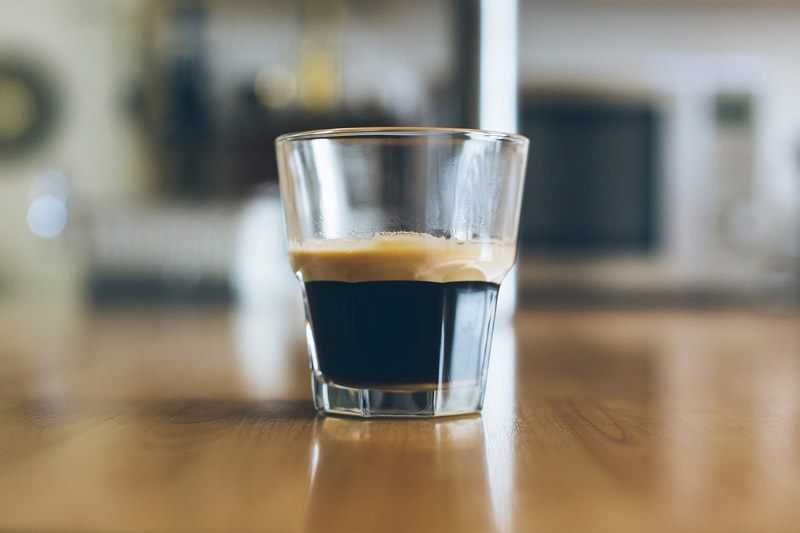From Bean to Cup: The Journey of How Coffee is Made
25th April 2019
Do you know the ultimate journey a coffee plant takes from crop to cup? Coffee is a fascinating subject and not everyone is aware of where coffee originates from and how it is grown. This is your in-depth guide of how coffee is made, and the journey it takes to form the perfect brew.
Plant
Coffee begins its remarkable journey as an Arabica or Robusta coffee plant. The average Arabica plant is a large bush with dark green oval leaves. The fruits of the plant are rounded and mature within 7 to 9 months and contain two flat seeds, also known as the coffee beans. Robusta coffee beans are a robust shrub or small tree that can grow up to 10 metres high. These fruits are rounded and take up to 11 months to mature and are smaller than Arabica seeds.
The average temperatures and climates for the plants to grow is between 15 to 24 degrees for Arabica coffee and between 24 and 30 degrees for Robusta which flourishes in warmer climates. Arabica grow best at high altitudes and is often grown in hilly areas. Robusta however, can be grown near sea-level.
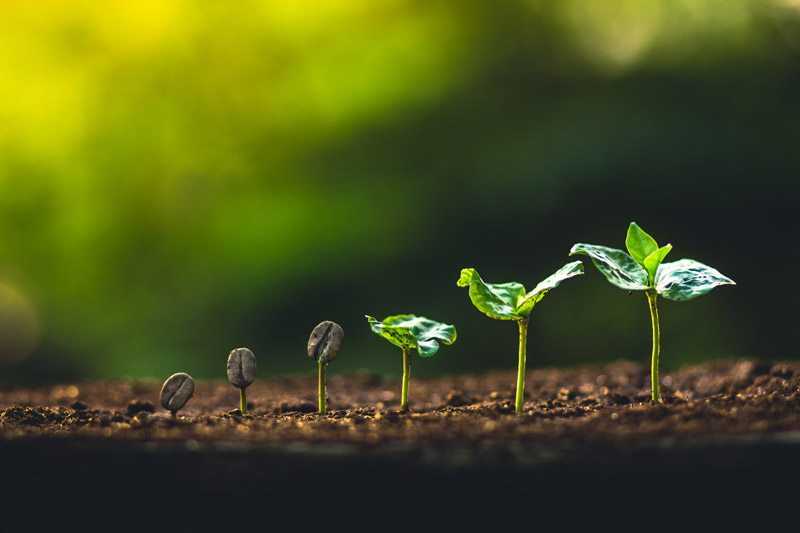
Flower
Coffee plants bloom into flowering, fragrant white blossoms. The coffee cherries grow along the plant’s branches and are covered with dark green waxy leaves that grow in pairs. Some coffee plants however, can actually produce purple or yellow leaves. Coffee plants can live as long as 30 – 40 years and and are pruned about once a year.
Whether it is an Arabica or Robusta coffee plant, the cherries generally look the same but may range in size. They are essentially red seeds that have a variety of inner and outer layers. Small delicate white flowers will grow where the leaves and branches join releasing a sweet aroma.
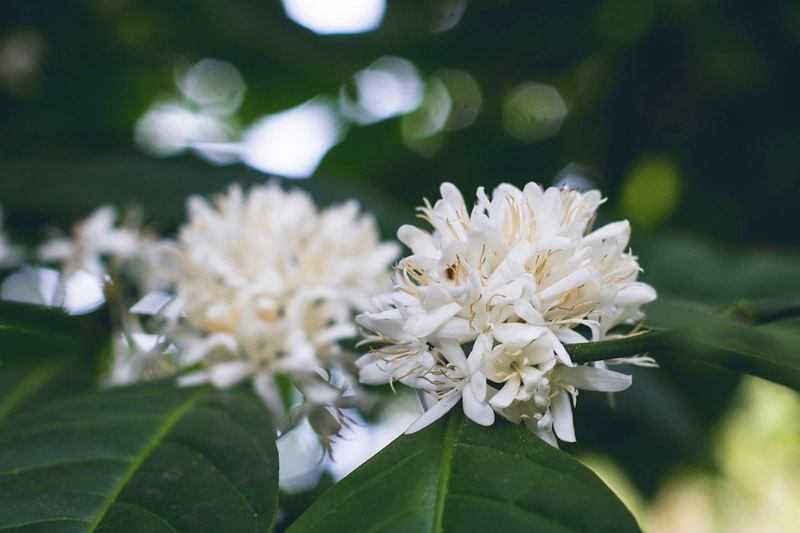
Fruit
After 3 to 4 years once coffee plants reach maturity, they bear fruit in lines or clusters along their branches. The fruit turns red and cherry-like when it is ready to be harvested and will take between 6 to 11 months to ripen. Six to eight weeks after pollination and a cherry fruit will appear where the flowers were located. The unripe cherries are green and over time turn red, yellow, orange or even pink depending on the variety.
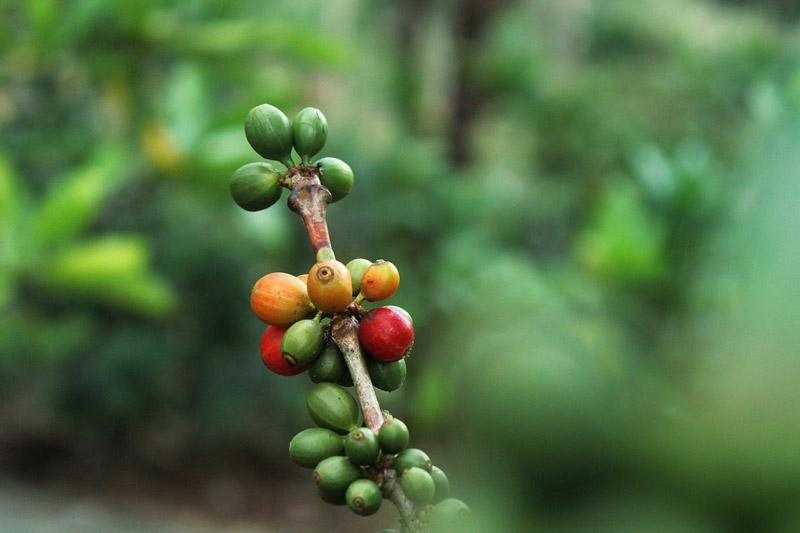
Harvest
As coffee is often grown in mountainous areas widespread use of mechanical harvesters are not possible, so the seeds are usually picked by hand. With the exception of coffee plants grown in Brazil in coffee fields that allow for machinery use. Coffee trees yield an average of 2 to 4 kilos of seeds and a good picker can harvest 45 to 90 kilos of coffee beans per day. This will produce an average of 18 kilos of coffee beans.
Coffee can be harvested in one of two ways:
Strip picked – All the coffee beans are stripped off the branch at one time either by machine or by hand.
Selectively picked – Only the ripe cherries are harvested and they are picked by hand.

Pulp
Inside every cherry there is two small seeds. These seeds are the coffee beans and go through extensive processing to remove the fruit and mucilage before being dried, roasted, ground and brewed.
The pulp of the fruit will need to be removed from the coffee beans. The coffee beans will need to sit in water for 12 to 24 hours for the pulp to float to the top and the beans will sink to the bottom. Once this process is complete the beans are removed from the water to dry in sunshine for up to 10 days.
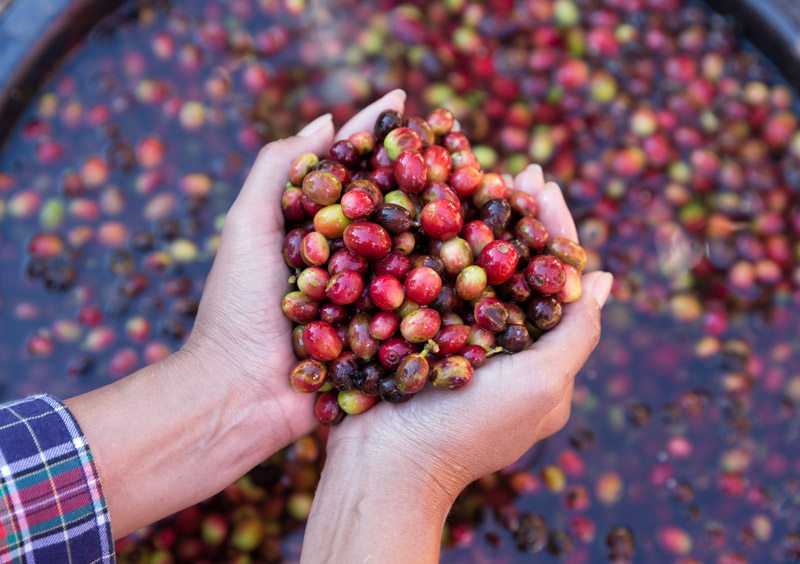
Dry
This involves drying the whole coffee seed and is the oldest, most simple method that requires little machinery. The cherries are sorted and cleaned by hand to remove unripe, overripe or damaged seeds as well as any dirt, soil, twigs or leaves. The cherries are spread out into the sun either on large concrete. As the cherries are left to dry they are raked and turned by hand to ensure even drying. This process can take up to 4 weeks before the cherries are dried sufficiently.
Once dried, the cherries are stored in silos until they are sent to the mill for hulling where the outer layers of the dried cherry are removed. All the green coffee beans are sorted ready for selling. The dry method is used to process Robustas and the majority of Arabica coffee produced in Ethiopia, Halti, Paraguay, India and Ecuador.
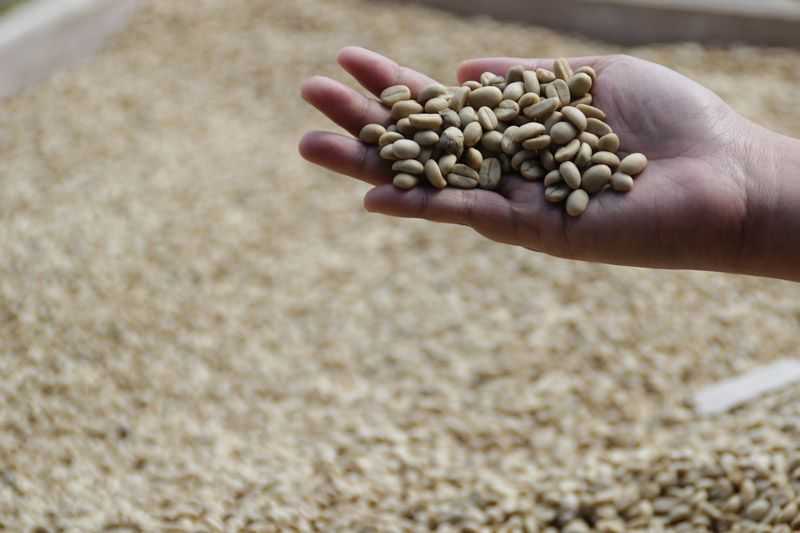
Roast
During the roasting process all the coffee tasting aroma components are formed, along with the browning of the coffee beans. More than 1000 different coffee aroma components exist. The roasting process makes it possible to achieve the specific flavour profile of the final coffee according to the preferences of the consumer. Green coffee beans are heated between 180 degrees and 240 degrees for up to 20 minutes. Stronger roasting with generate darker colours and a more intense aroma and flavour.
Coffee is roasted in rotating drums heated from below. The burners are often heated with gas or oil. Following from the roasting process, the beans are cooled down to room temperature. They will then be packaged as whole beans ready for sale.
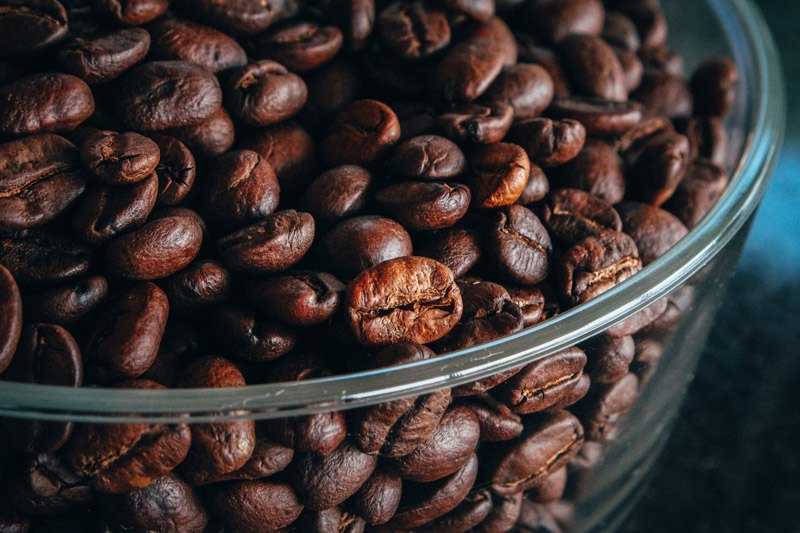
Grind
The next step is to find a grinder that works for you or one that comes with an espresso machine. The coffee beans are placed into a grinder when fresh, and grind. The results will depending on the variety of coffee bean and how fine the coffee is ground. Consistency is always key and it is important to know how to grind your coffee beans. When using a French Press your coffee beans should be coarse, medium when using drip coffee makers and fine when using espresso machine or conical drip. A good coffee ratio is 16 parts water and 1 part coffee to brew the perfect cup of coffee.
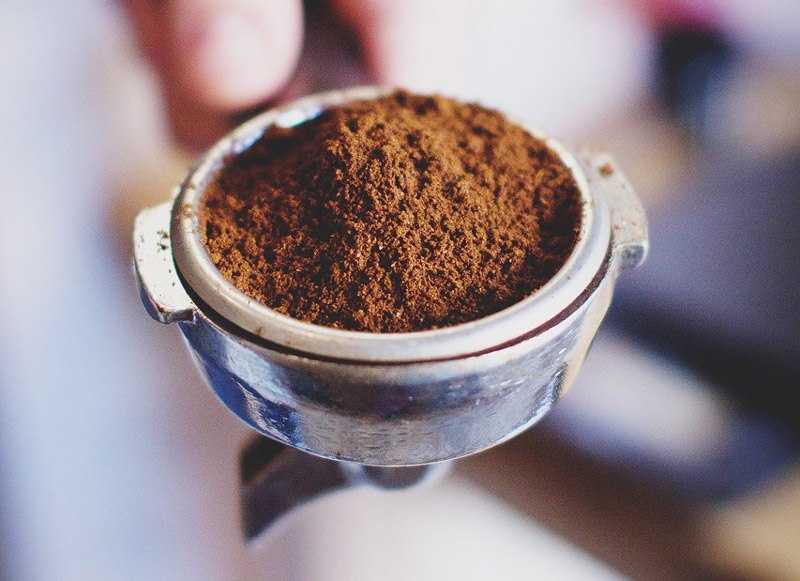
Brew
You are ready to go! Once you have gone through the process of grinding your coffee beans your coffee will be ready to brew straight into a cup. Add milk, sugar or syrups to taste.
